History in a Glass: Fascinating Legends Behind 20 Famous Cocktails
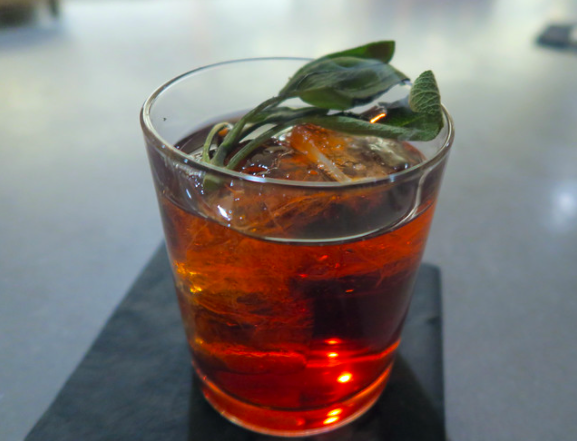
Although cocktails are thought to be as American as apple pie, they’re actually a hand-me-down from the British. The Brits were known for alcoholic punches, in which they mixed liquor, fruit juices, and spices. Many of today’s most popular cocktails have histories that span the globe and complicated backstories — the details of which have often been lost. From the medicinal mojito to the Paris-born bloody mary, here are the legends behind 20 famous cocktails. As with most legends, take them with a grain (or rim) of salt.
Related: The Best Costco-Brand Liquors to Buy — and Which to Leave on the Shelf
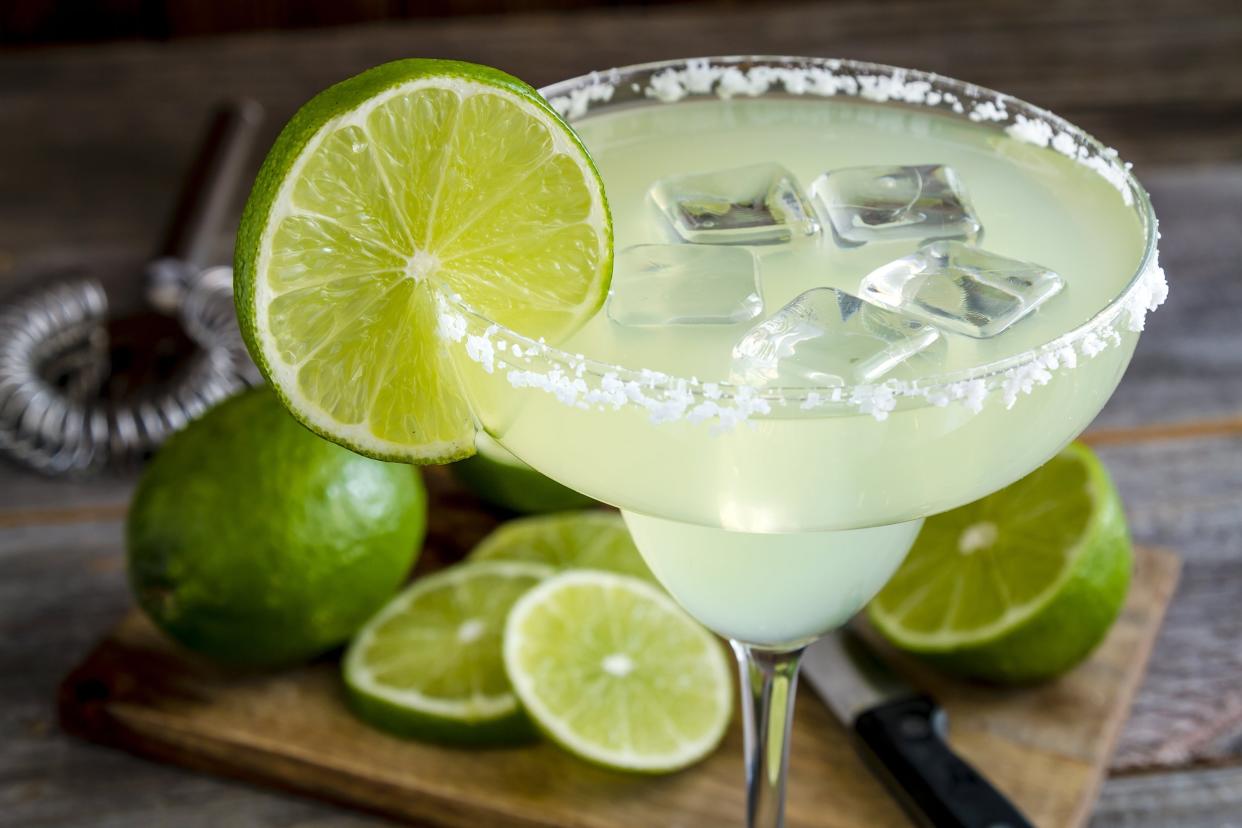
The margarita has nearly as many potential origin stories as it does ingredients. The cocktail features tequila, lime juice, and Cointreau or Triple Sec, and it’s served cold, on the rocks, or blended in a salted rim glass. Restaurateur Carlos “Danny” Herrera is said to have mixed the first margarita at his Tijuana, Mexico, restaurant, Rancho La Gloria, for a customer who could only drink tequila. He leveled up the traditional tequila shot (served with salt and a lime wedge) into the legendary libation in 1938. The Kentucky Club, in Juarez, also claims to be the margarita’s birthplace. Dallas socialite Margarita Sames also said she invented the cocktail in 1948 at her Acapulco vacation home.
Related: The Best Splurge-Worthy Tequilas for Sipping and Mixing
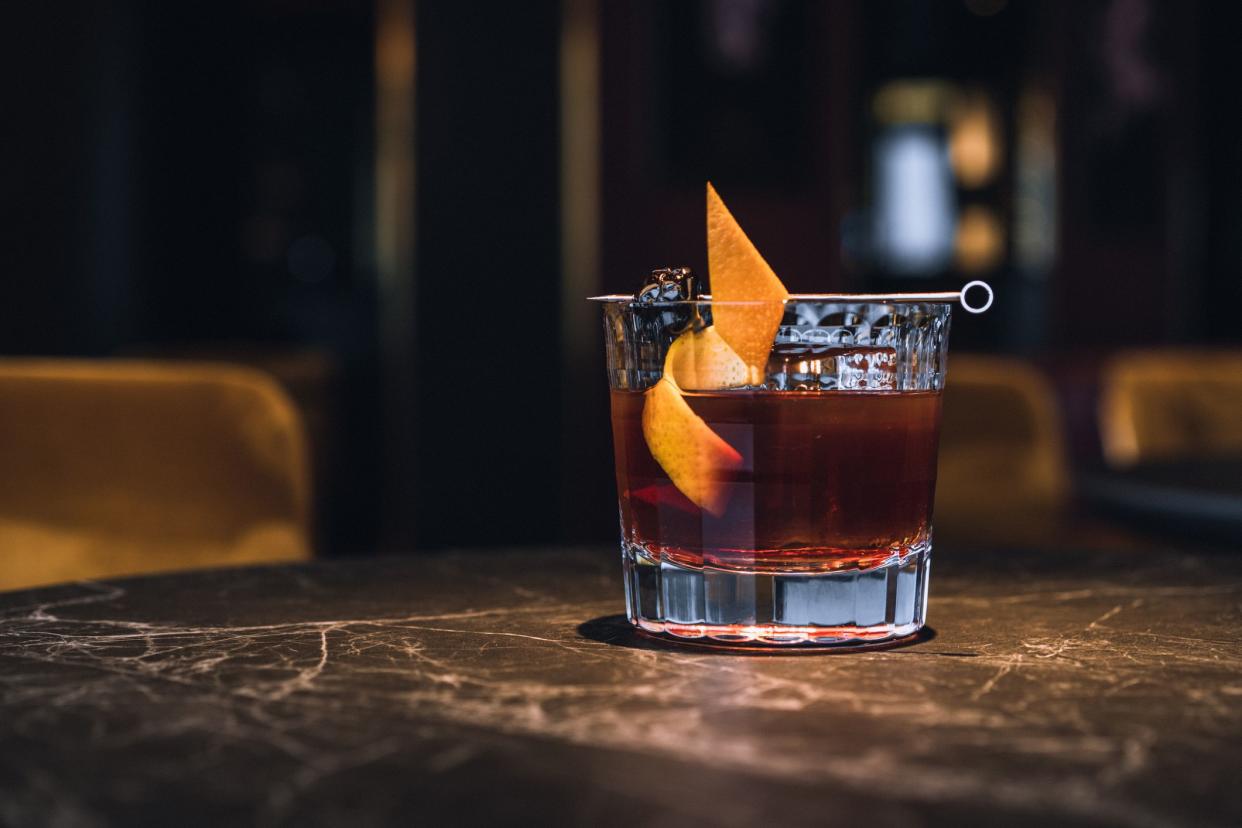
The 1862 book “Jerry Thomas’ Bartenders Guide: How to Mix Drinks” hinted at the drink that became the Old Fashioned, though it lacked the libation’s use of whisky. In 1880, Louisville, Kentucky, social club The Pendennis Club brought the modern incarnation to life. James E. Pepper invented the drink, likely with Kentucky bourbon to accompany the bitters, sugar, and plain water that make up this classic. He took the recipe with him to the Waldorf-Astoria Hotel bar in New York City where it gained traction.
Related: Best Bottles of Bourbon for $50 or Less
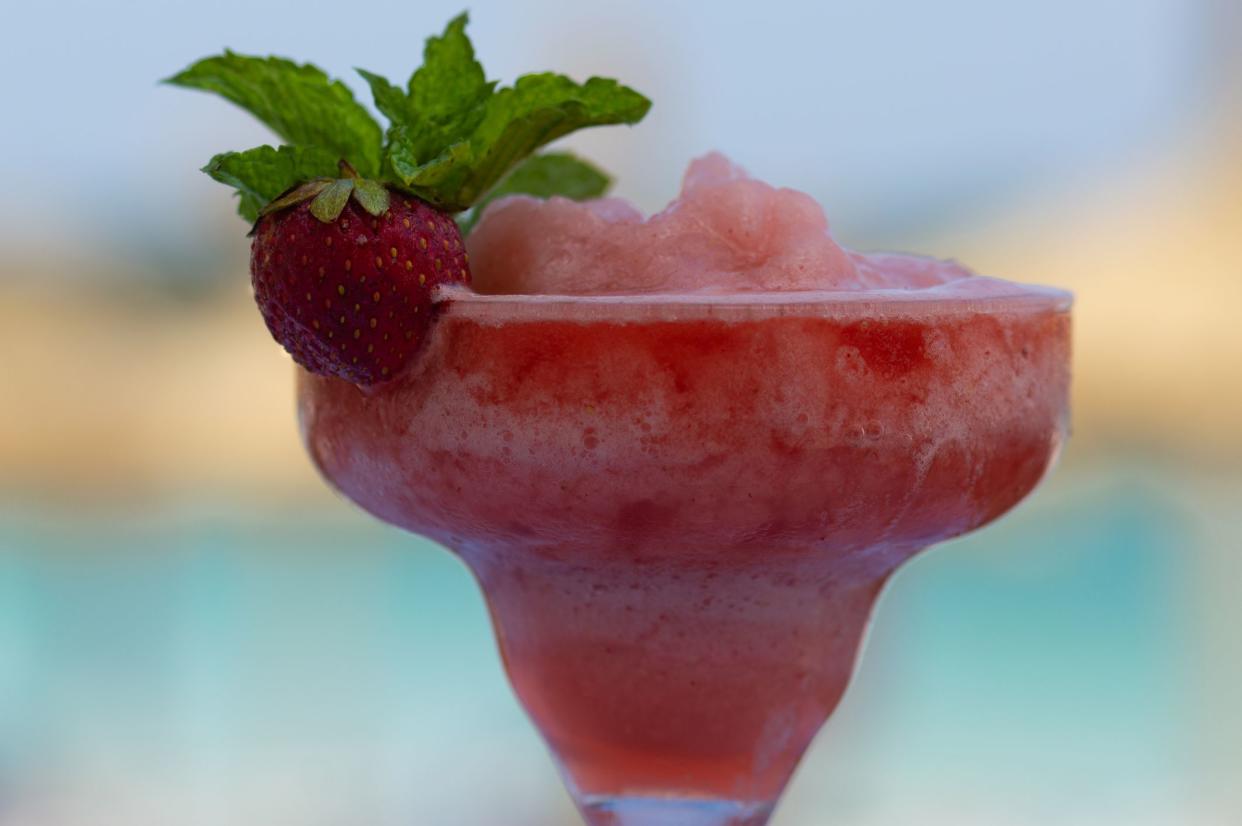
Although many cocktails have liquid histories, the daiquiri’s background is more concrete. American engineer Jennings Cox signed an 1896 recipe card that proves its origins. Cox created the drink while in Cuba. He used rum, which was and remains plentiful in the island nation; limes; and brown sugar for sweetness. The cocktail shares its name with the nearby village of Daiquirí.
Related: The Best Rums Under $35 to Spice Up Your Home Bar
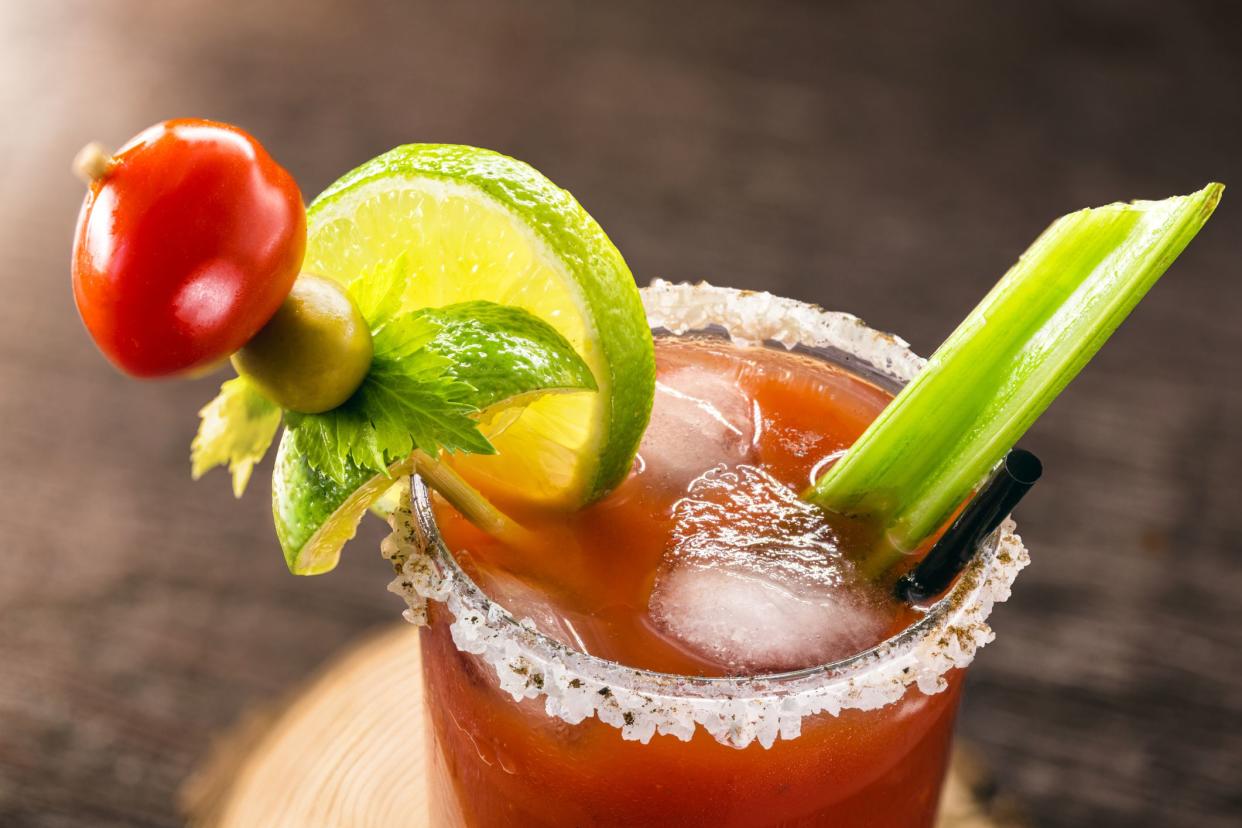
This drink may have been named after a British queen — at least according to urban legend — but it was invented in Paris. Bartender Fernand Petiot developed the mixture at Harry’s Bar in 1921. Today’s brunch favorite, which has vodka, tomato juice cocktail, Worcestershire, black pepper, and lemon, was adopted across the Atlantic under the name “The Red Snapper.” It adopted its more famous appellation a decade later. Queen Mary Tudor, whose gory reign inspired her nickname “Bloody Mary,” is thought to have inspired the drink’s current name.
Related: Over-the-Top Bloody Marys Across America
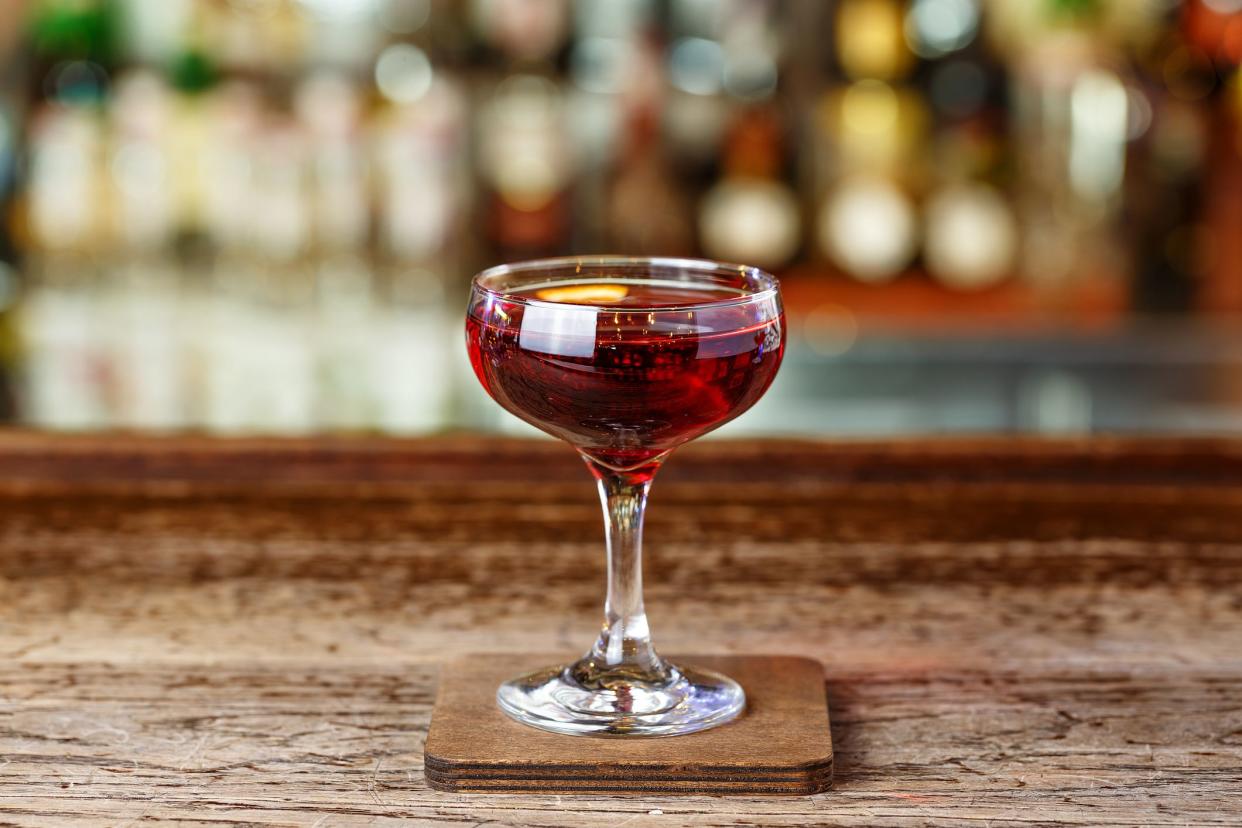
Popular lore traces the Manhattan’s origins to the Manhattan Club in New York, which still lays claim to the drink. However, cocktail historians trace its genesis to Hoffman House, where bartender William F. Mulhall mixed the drink in the 1860s. Today’s version features just three ingredients: whiskey, sweet vermouth, and bitters.
Related: Where to Order Beer, Wine, and Liquor Online
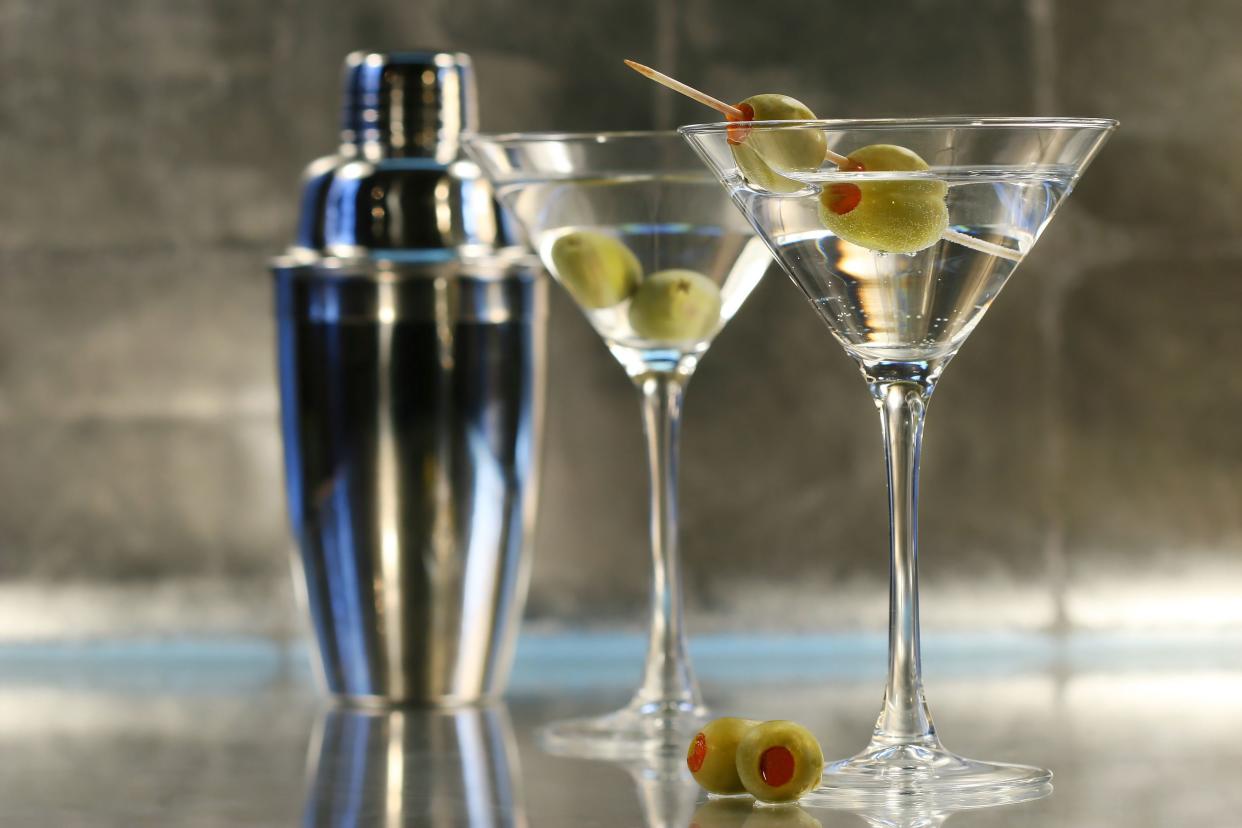
The martini is a utility hitter when it comes to libations. The basic ingredients of gin and vermouth can be transformed when combined with other elements, such as espresso. The classic version is garnished with an olive or a lemon twist. The drink is said to date to the Gold Rush era. It hails from Martinez, California, where a resourceful bartender supposedly mixed a miner a celebratory drink with what he had behind his bar: gin, vermouth, bitters, maraschino liqueur, and lemon.
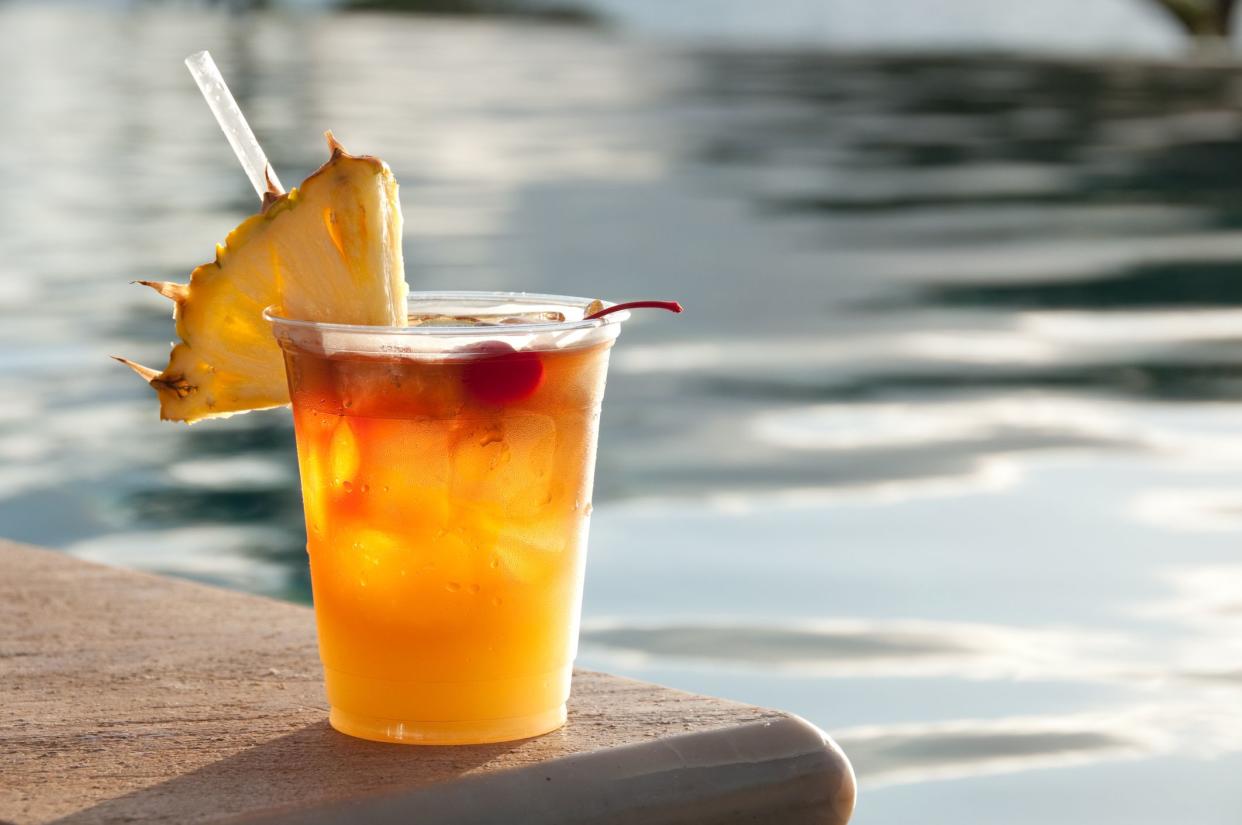
Although others have claimed credit, popular opinion holds that this sugary drink traces its roots to an Oakland, California, restaurant, where Victor Jules Bergeron, aka “Trader Vic,” mixed the first drink in 1934. When he tested a new cocktail with rum, lime, orgeat (almond syrup), orange curaçao, and simple syrup, on his Tahitian guests, they proclaimed “Maita’i roa a’e!” (“Out of this world! The best!”). It was then dubbed the “Mai Tai,” or simply “The Best.”
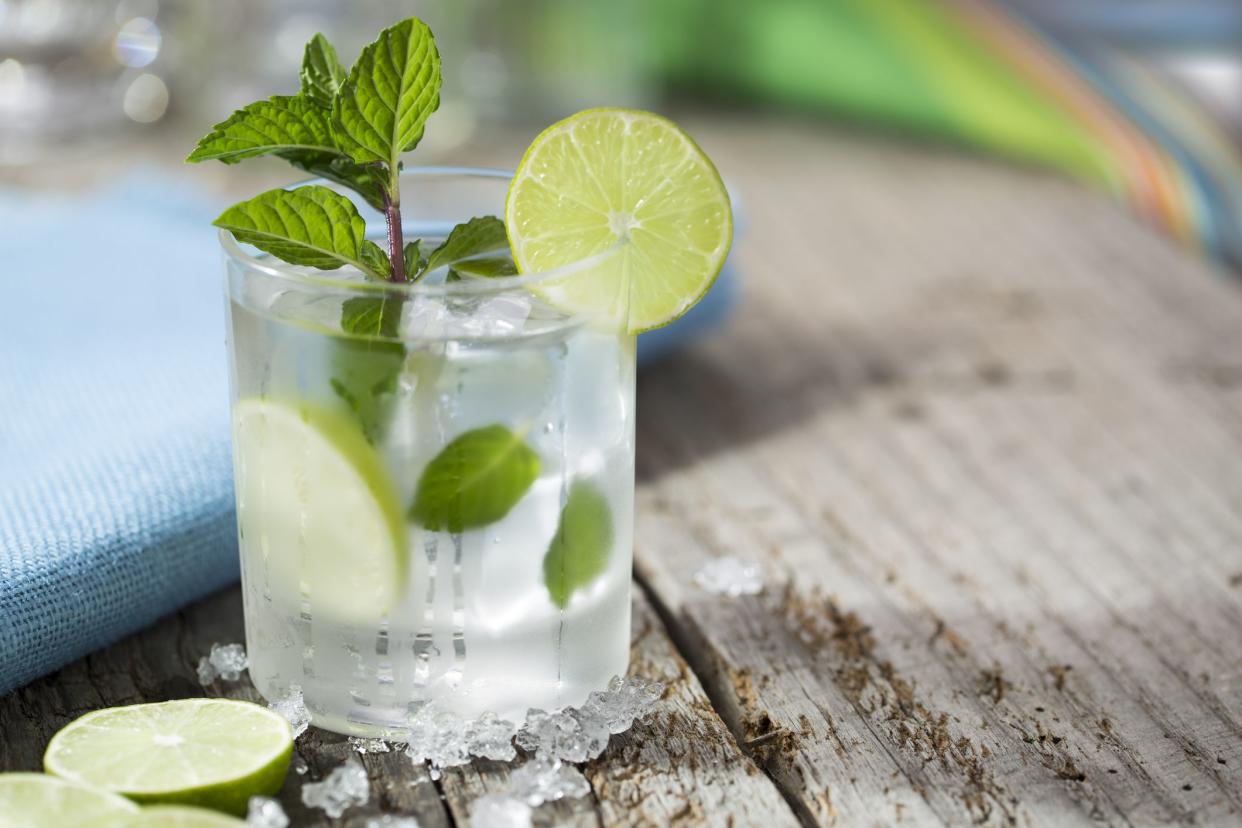
When you drink a mojito, you’re drinking like a pirate — at least according to one of several of the drink’s genesis stories. After English swashbuckler Sir Francis Drake’s 1500s invasion of Cuba was unsuccessful, he (supposedly) mixed the first mojito in Havana. The drink was thought to be medicinal. The combination of white rum — or back then, aguardiente — sugar, lime juice, soda water, and yerba buena or spearmint was thought to cure ailments like scurvy. The drink remains one of Cuba’s most famous cocktails.
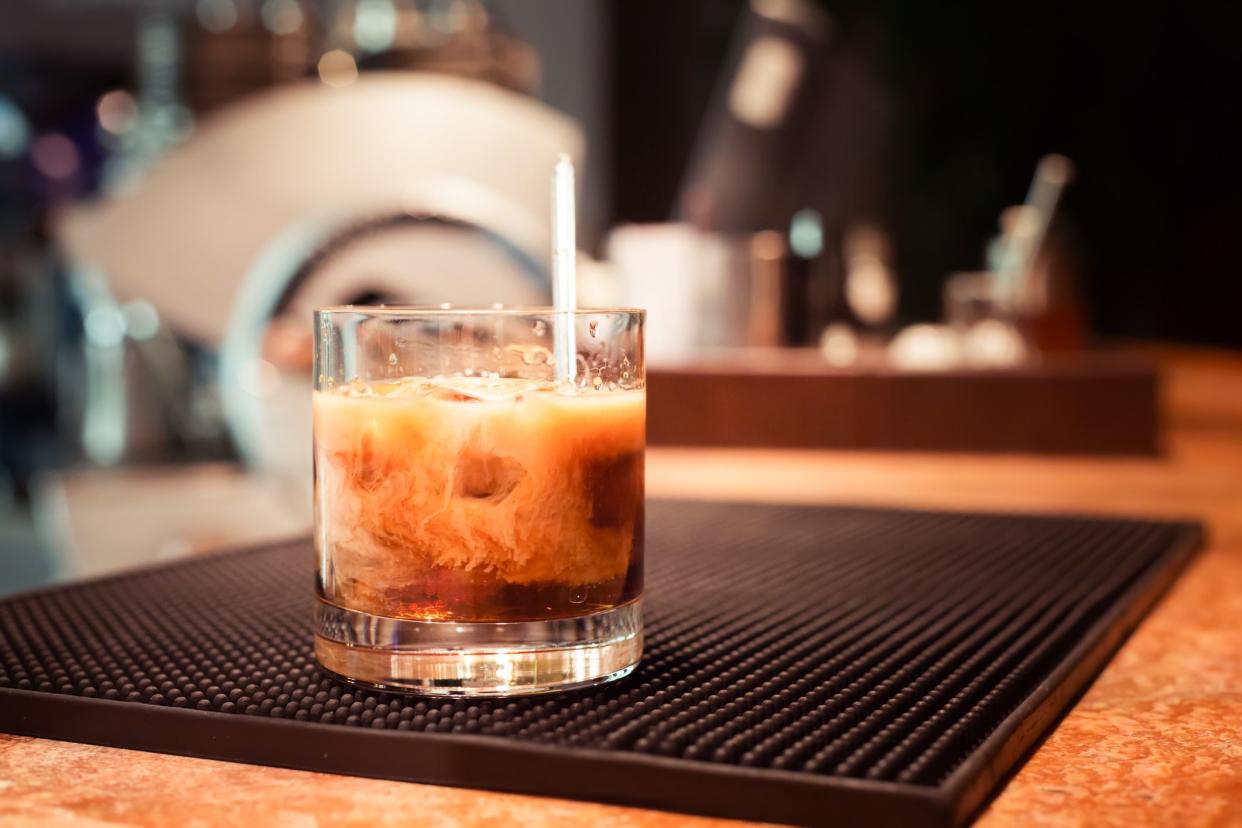
The white russian could be classified as dessert thanks to its easy-drinking combination of vodka, Kahlúa, and cream. The white version sprang up in the 1960s when the black russian got a splash of cream. The only thing either drink has to do with Russia is using the country’s signature spirit.
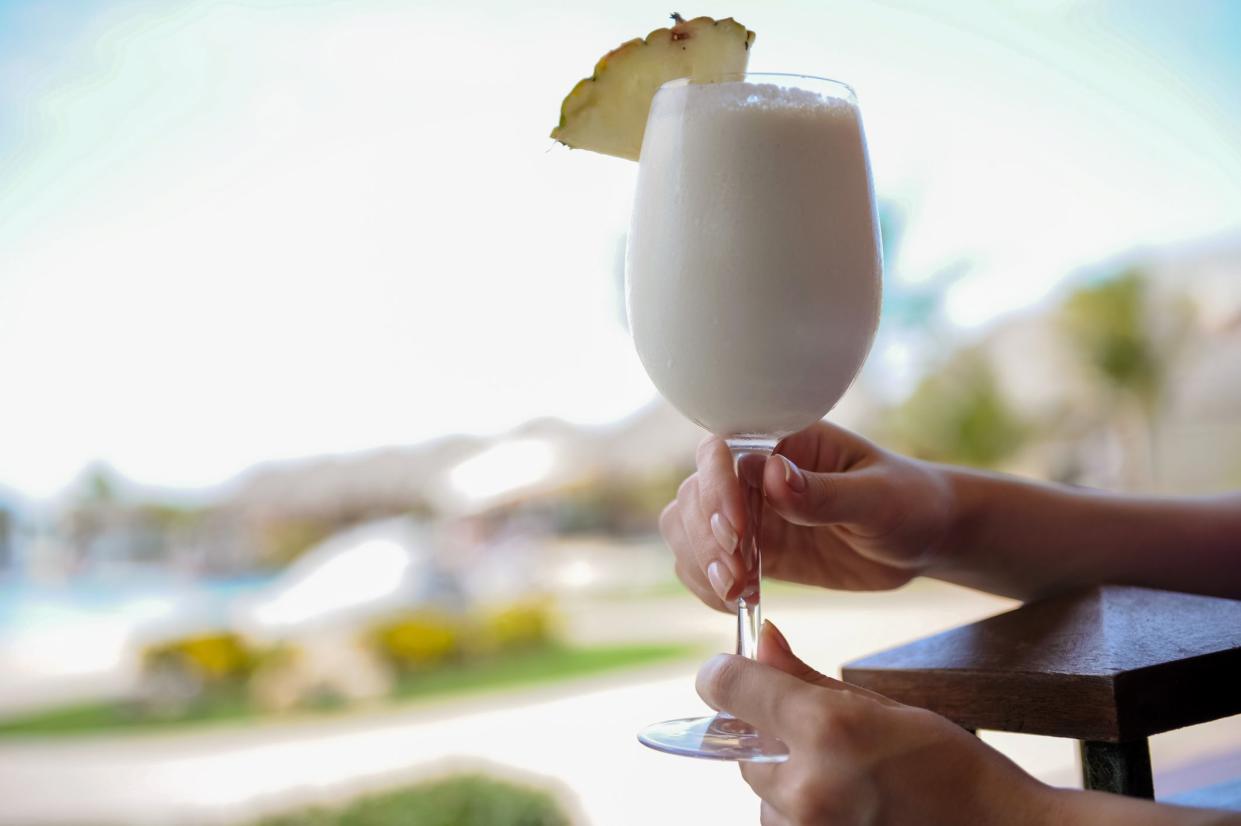
Three different bartenders claim they created Puerto Rico’s star cocktail, which features coconut cream, rum, and pineapple juice. Ramón “Monchito” Marrero spent months crafting the recipe behind the bar at the Caribe Hilton Hotel in 1954. However, his fellow bartender Ricardo García claims to have made it when a coconut shortage required him to devise a new recipe. A third mixologist, Ramón Portas Mignot, at Barrachina in Old San Juan, also stakes a claim.
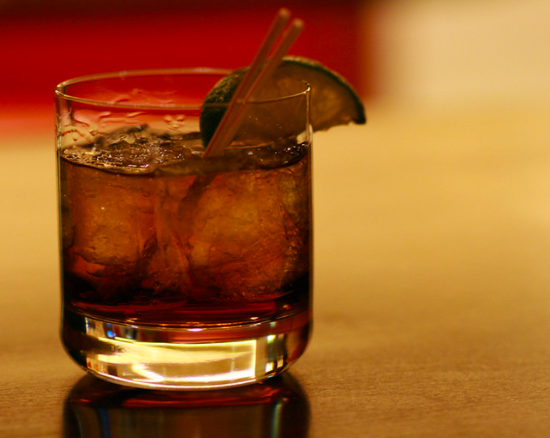
The rum and Coke represents freedom and independence — at least if you’re asking Cubans, who adopted the Cuba Libre as its victory drink after the Spanish-American War. The drink morphed into rum and Coke after the Coca-Cola company flew in crates of its cola to Cuba in 1902.
Related: 17 Refreshing Summer Cocktails From Around the World
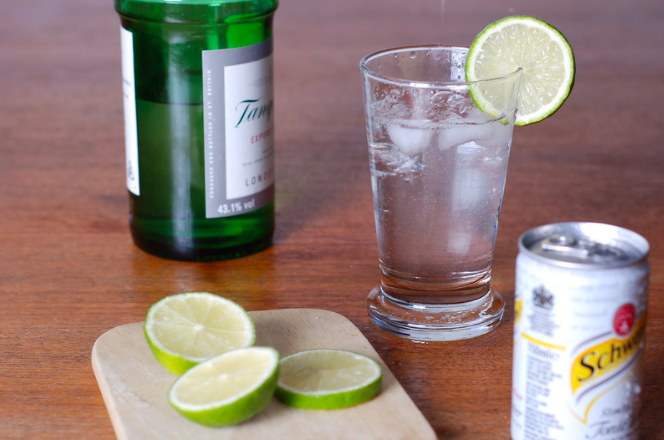
Cocktails mixed with tonic gained popularity during the British occupation of India when the soldiers used tonic water containing quinine, created by the bark of cinchona, to prevent and cure the effects of malaria. The tonic was supercharged with quinine, and it was much more potent than what’s used today. Initially, the Brits cut the flavor with sweet spirits, such as rum. Gin was incorporated as early as 1868, when a magazine reported spectators at a horse-racing event in India were asking for the refreshing drink.
Related: Spirits and Mixers Every Bar Should Have
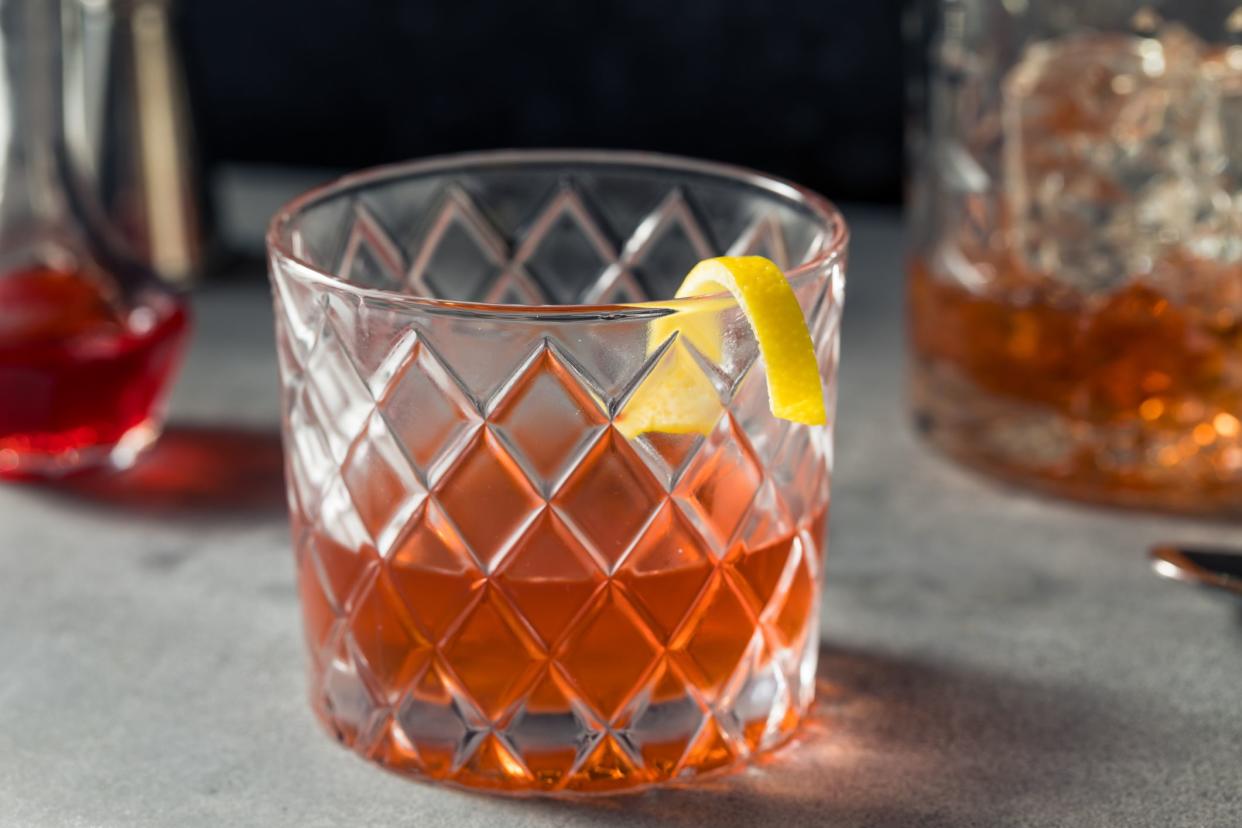
The Sazerac takes its name from Sazerac-de-Forge et fils, a French brandy that figured in the cocktail’s original version. Antoine Peychaud mixed the first drink in 1838 in his New Orleans apothecary to serve to his fellow Masons. As the drink evolved, American rye-whiskey subbed in for cognac. It later came to include absinthe and Peychaud bitters. The drink is still synonymous with the Crescent City.
Related: Best Whiskeys Under $50
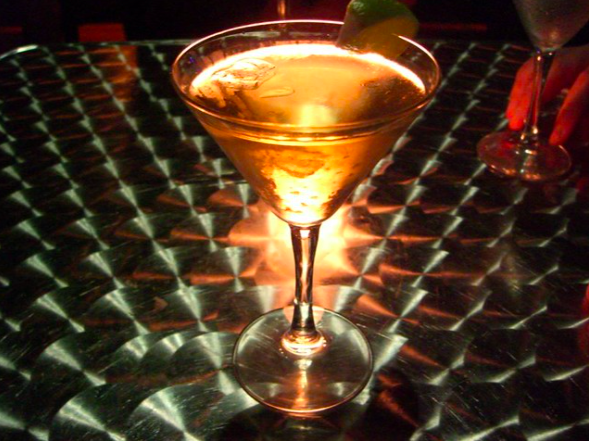
Some drinks are said to cure all that ails you. That was true in the vodka gimlet’s heyday when British sailors used the drink to consume vitamin C-packed lime juice to protect themselves from scurvy. The lime juice became more palatable when Rear-Admiral Sir Thomas Gimlette thought of adding liquor.
Related: The Best Vodka Under $30
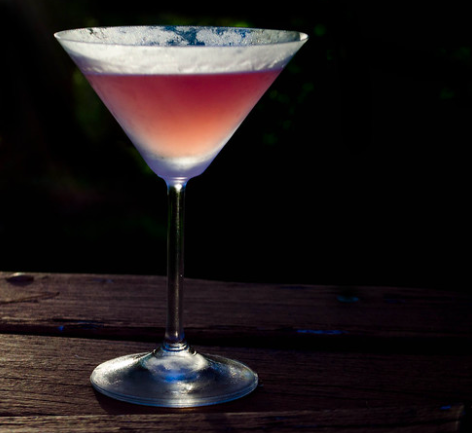
Although “Sex and the City” fans may beg to differ, the cosmopolitan’s history predates its days as Carrie Bradshaw’s favorite drink. According to San Francisco bartender John Caine, the drink precedes World War II when it was known as a vodka gimlet. After World War II, it evolved to include French Cointreau along with the vodka and lime, and a new name — “kamikaze.” In the 1980’s, bartenders added cranberry juice to give the drink its iconic blush.
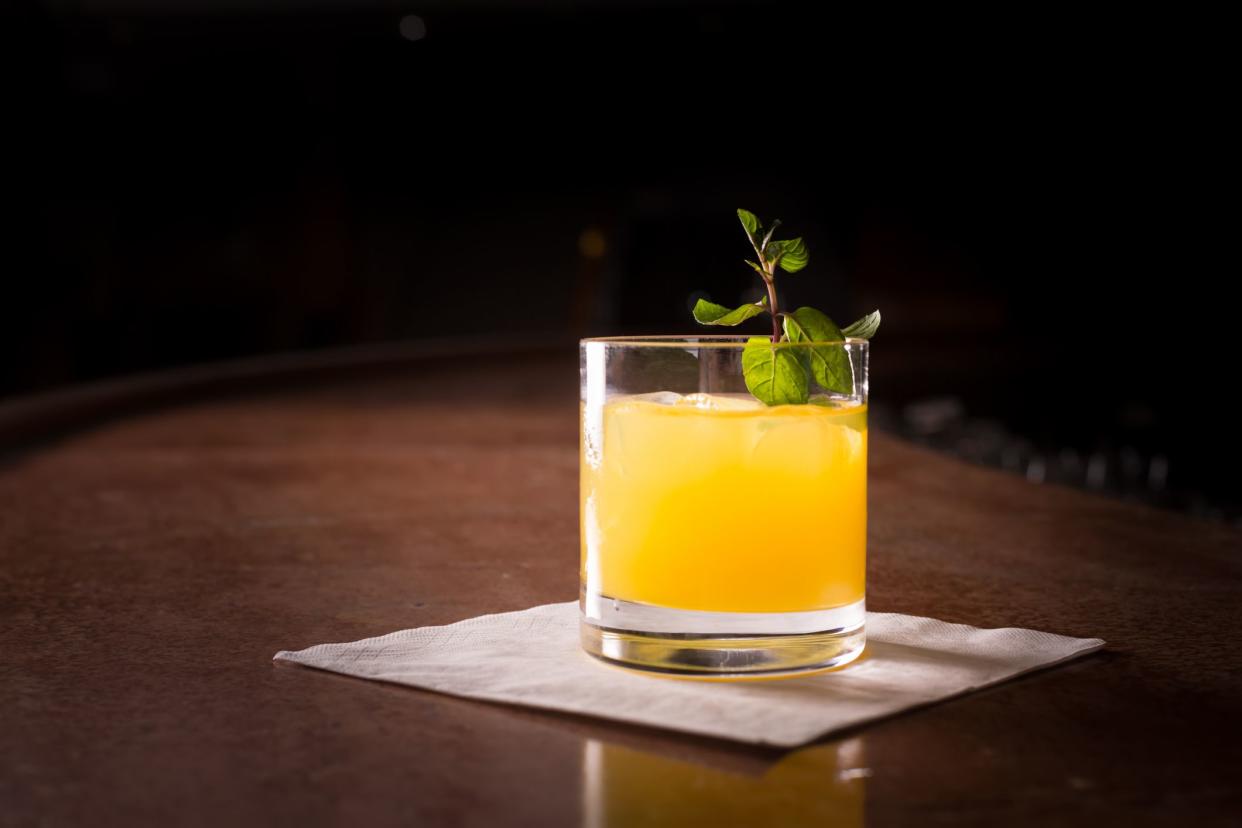
Although popular history tracks this cocktail’s origins to World War II when American Marines mixed vodka with their orange juice, there’s another plausible story to consider. Some say around the same time, Persian Gulf oil workers started mixing the two ingredients together. When they lacked something to stir their drinks with, they reached for what they had on hand: a screwdriver.
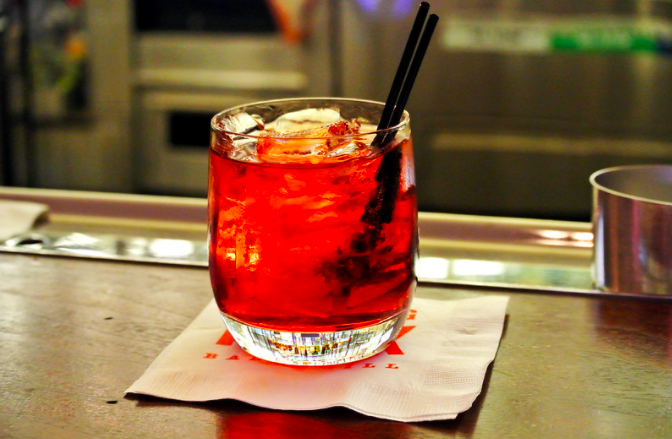
Count Camillo Negroni was an exacting customer when, in 1919, he ordered the drink that became the cocktail we drink today. He asked the bartender to replace the soda water in an Americano (a libation with Campari, red vermouth, and soda water) with gin. The bartender did so and swapped out the usual lemon garnish with an orange one. The Negroni was born. Today it’s served with Campari (an Italian bitter), gin, and sweet vermouth.
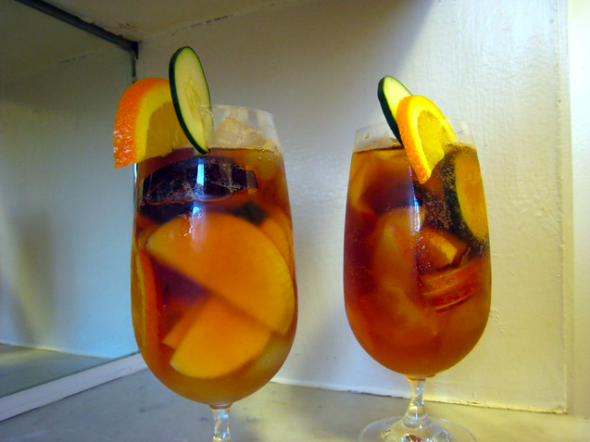
British bar owner James Pimm created his eponymous drink between 1823 and 1840. His creation used gin, quinine, and herbs, and quickly became the bar’s specialty — or house cup. When subsequent cups were born with alternate spirits, the original got a number, too — No. 1. Today’s recipe uses gin and sparkling lemonade or ginger ale that’s served with fruit and garnished with mint.
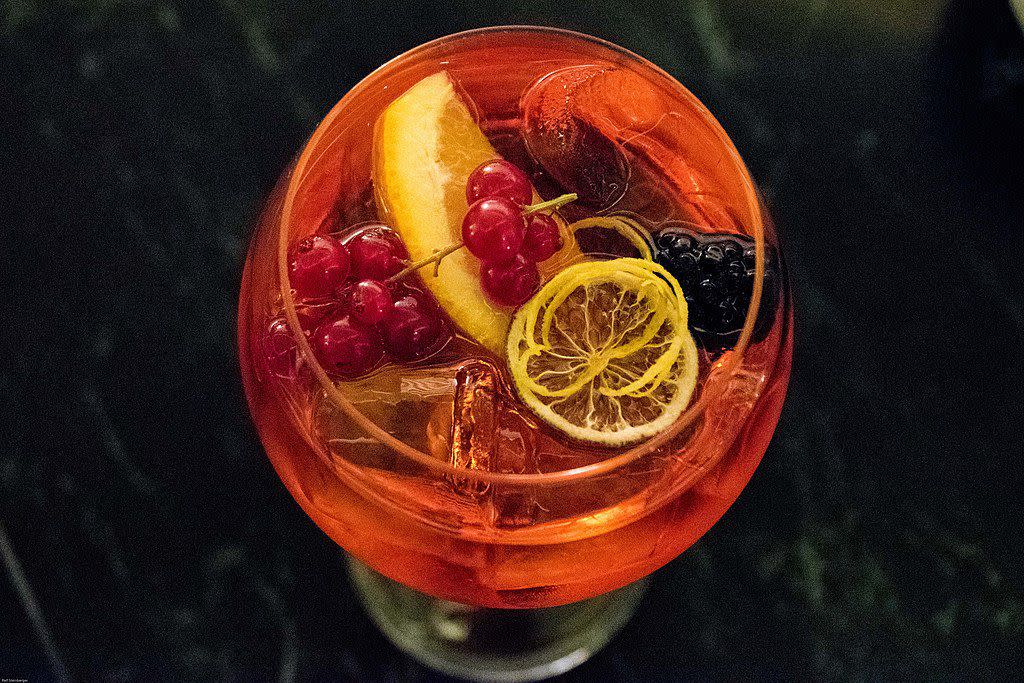
This summer-in-a-glass cocktail mixes Aperol (an Italian bitter apéritif made from bitter and sweet oranges and rhubarb), prosecco, and club soda. Aperol was born in 1919 after Luigi and Silvio Barbieri released orange-hued nip. A few decades later, in the 1950s, the drink was matched with the long-held tradition of the spritz as a pre-dinner drink. The cocktail made its way to the U.S. in the early 2000s.
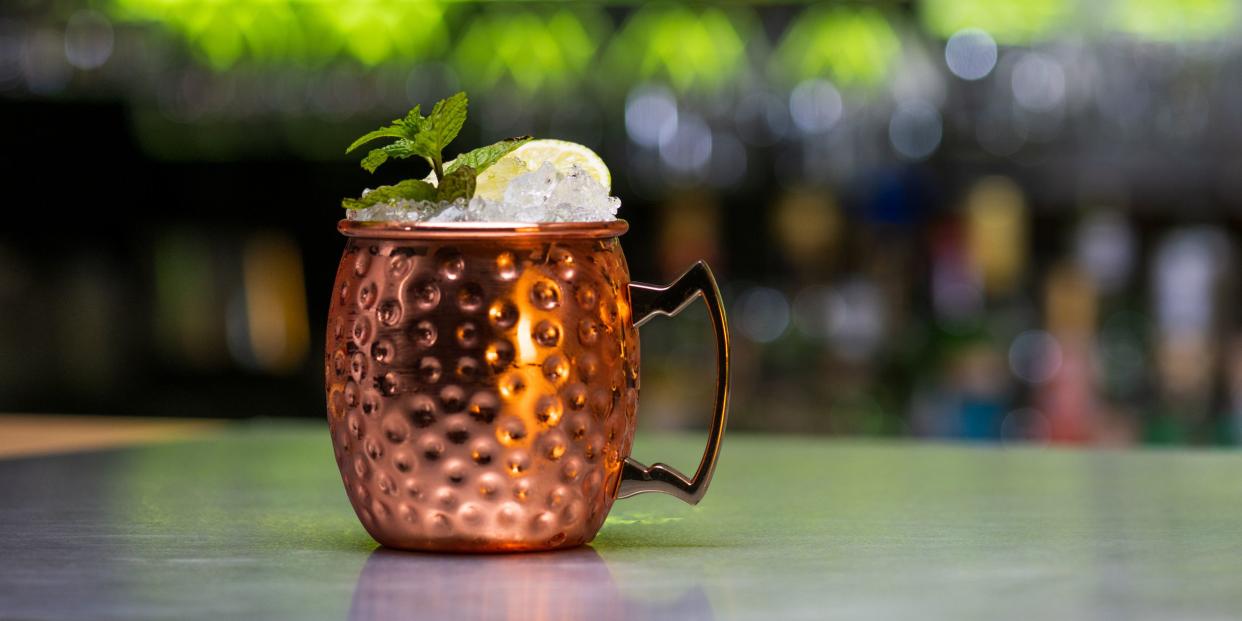
The Moscow mule and the copper mug. The two are synonymous with each other, and so are their histories. The drink emerged in 1941 from Los Angeles pub Cock ‘n’ Bull, which had an excess of ginger beer on hand. Owner Jack Morgan and bar tender Eric Felton both laid claim to the recipe, though Morgan’s claim came with this addendum: his girlfriend owned a company that made copper mugs, and she was a savvy saleswoman. The refreshing drink mixes vodka, ginger beer, and lime.
Find more fun and fascinating coverage of cocktails, beer, and wine right here.
